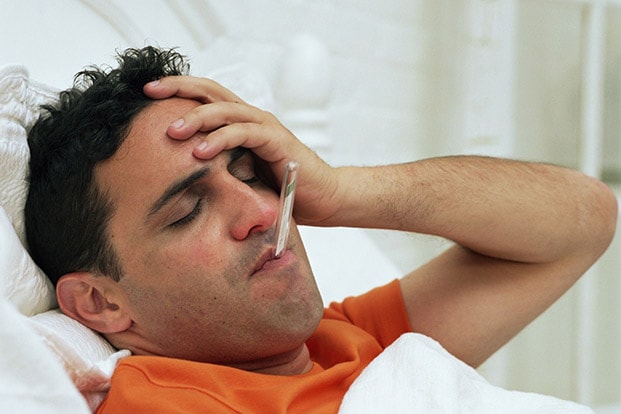Every now and then, we hear on the news, read in the newspaper and watch on TV about how we can take precautions to stay away from malaria. Every year the government of India produces several schemes to educate masses about malaria causes and symptoms.
However, many of us are still unaware by the route cause, types, treatment options and syndromes of malaria. Buckle up like most of your questions will be answered today for we are going to discuss this threatening disease in detail.
What is malaria?
Malaria is a disease that can be transmitted by the bite of a type of mosquito that has been infected with the virus. This mosquito is known as Anopheles and carries malaria parasite from person to person. This parasite is called Plasmodium parasite. Plasmodium is released directly into our bloodstream whenever an infected mosquito bites you.

The malaria cause may sound simple, but it is not so. This is because the lifecycle of mosquito-parasite is a bit complex and constitutes of several stages. When the parasite is in our body, it travels directly to the organ where it can reproduce-the liver. Here, the parasite grows and after a week or so, it releases mature parasites into our main bloodstream while infecting our red blood cells.
After this process, the parasites start reproducing at a rapid rate and multiply in 48 hours. This causes the infected cells to burst open and plasmodium travels to other blood cells and infect them. This cycle lasts for two to three days.
Malaria is most common in subtropical and tropical climates where conditions act as a home ground for the parasite to grow. In 2016 alone, there are 216 million cases on malaria encompassing around 91 countries. In the US, there are around 1700 malaria cases reported every year and malaria causes and symptoms.
Malaria causes and symptoms
The Plasmodium infection can be subjected to treatment if detected early. To do this, you need to know the various causes and symptoms of this disease.
Starting with the causes, we know that the parasite is the root cause of this deadly syndrome. The microscopic parasite is transmitted to a person through mosquito bites. Here is a summed up scenario of the parasite life cycle
- First of all, a mosquito is infected by the parasite as he feeds or sucks up the blood of an infected person
- Then the parasite is transmitted to the person which is bitten by the infected mosquito
- When the parasite enters our body, it travels into our body. It can remain dormant in our liver as long as one year
- When parasite grows, it enters the bloodstream leaving the liver. They start infecting red blood cells. This is the time when a person is said to be totally diagnosed with malaria.
- When you are infected with malaria, a common mosquito can become infected if he bites you and spread the disease by biting another person. This is how this disease becomes communicable.
There are several other modes through which people can become infected with blood cells. They can catch malaria if exposed to infected blood. Malaria can spread from mother to the fetus, through blood donation or by sharing needles used by the infected person.
Some of the most common malaria causes and symptoms include:
- Chills
- Fever
- Nausea
- Vomiting
- Muscle pain
- Fatigue
- Headache
- Regular cough
- Sweating
- Chest pain
- Abdominal pain
In severe cases, people often experience malaria attacks. The attack usually comes with signs such as shivering and chills. Later, the person gets a high fever and the body starts sweating. This returns to normal temperature after a few moments. The signs and symptom of Plasmodium malaria disease appear just a few weeks after the infected mosquito has bitten the patient.
Types of malaria
Just like any other disease, malaria is also classified in various forms. We know that it is caused by the parasite known as Plasmodium. These parasites have 5 different classes. Out of these, 2 are considered to be severely harmful. The first one is P. Falciparum which is a common one in countries like Africa. This parasite causes prompt cell blood loss along with clogging of blood vessels.
P.Vivax is the second most harmful type of Plasmodium parasite which is common in Asian countries. This species can lie dormant for a long time and then rise to infect blood cells. This type of Plasmodium is harmful as it can cause malaria even years after the mosquito bite.
The next two are P.ovale and Plasmodium malaria that are said to be less infectious and harmful to humans. The last species known as Plasmodium know less may infect primates but its effects and mode of transmission are still under consideration.
Malaria treatment and prevention
When you face the chances of infection, you should look for a malaria cure with a long and strict course of treatment action. The main motive of the treatment options is to eliminate Plasmodium from our main bloodstream. If your body isn’t showing any symptoms, you can still get the treatment that will reduce the risk of syndrome transmission to other healthy persons.
A unique therapy by WHO rely on an artemisinin combination also called ACT that works well in treating uncomplicated malaria. Now you might wonder what artemisinin actually is. This is a substitute from the Artemisia annua plant, wormwood in common language. The herb reduces the parasite concentration in our bloodstream.
Medical practitioners often use combining ACT therapy with a partner drug. The main of this therapy is to reduce the maximum number of parasites within the first few days of infection. The parent drugs along help eliminate the weakness and rest symptoms of malaria.
The ACT is a successful treatment by medicinal technology. But the ability to adapt by the parasite makes this therapy nonfunctional in certain areas. In such cases, an effective high dose of partner drug is useful.
The prevention of different types of malaria is equally important as its treatment. Some of the options you have for malaria prevention are:
- Seek medical help as soon as you encounter several malaria symptoms. You should do this as earliest as possible
- Stay safe while traveling to countries having malaria. You can search for the place and take certain precautions accordingly
- Ask the doctor about different medicines and new vaccines researched for the prevention and control of malaria.
- Try to obtain anti-malarial drugs before traveling. This will avoid the risk of getting infection by a person already suffering from malaria
- If you suspect a place to be dirty, always wear mask and proper clothes so that the mosquito does not bite you
- Remove all objects with standing water from your home as it gives rise to mosquitoes
- Use proper anti-mosquito repellents in your home, especially during summers. There are several medicines, balms, roll-on or machines available in the market that can help kill mosquitoes in your premises
- Try to keep babies always in mosquito nets as they are more prone to the disease than adults
Malaria is a worldwide phenomenon and day by day, mosquitoes are developing immunities which makes this disease stronger and harmful. By taking certain precautions and knowing about the treatment options as well as causes of the disease, you can avoid it in the first place and stay healthy forever.



